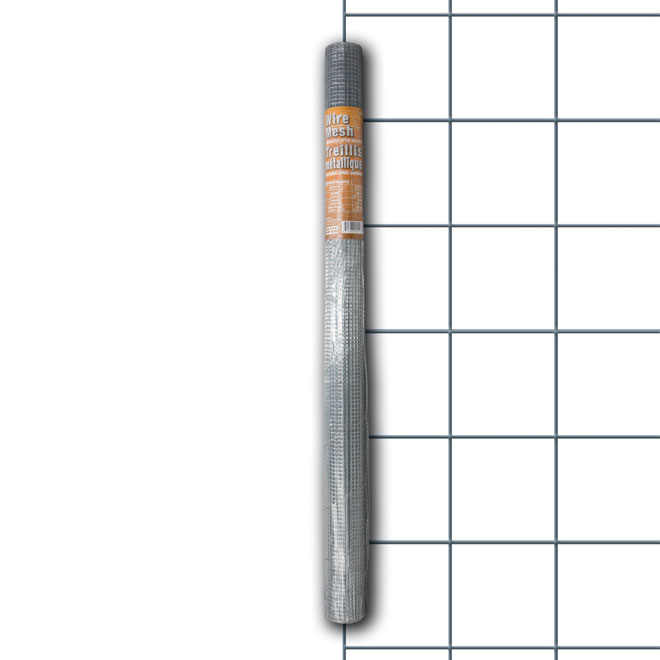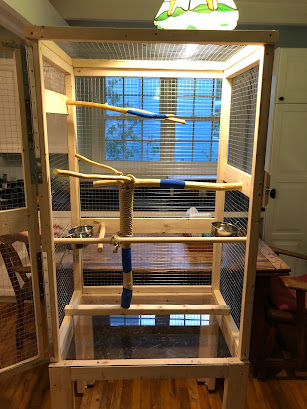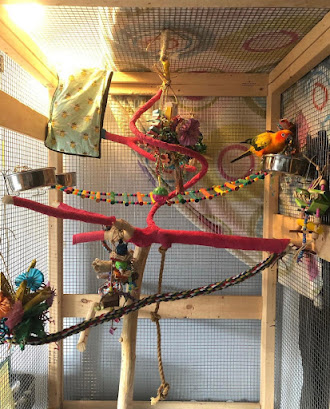The question we were stuck on before getting Ava: do we build our own custom cage or buy one?
When we began researching everything that goes along with adopting a bird, one of the things we quickly learned is that cage size, bar spacing and the material used are all very important aspects to take into account (based on your bird's size). It can all get a bit confusing because there are so many options out there.
We ended up building one... we're proud of it, but it is not a project that we would consider doing again. Continue reading to find out why.
Note: This will not be a comprehensive guide on how to build a cage like Ava's. We describe the process briefly, but please contact us directly through Instagram or email us if you have any specific questions.
Building Ava's Cage
First, we decided on the cage size we wanted for Ava. Everywhere you look online, it is always recommended to let your bird have a cage larger than the minimum requirements for the bird's size - ideally, as large as possible. For conures, it is recommended that they have a 24" x 24" x 24" minimum cage size with 5/8" to 3/4" bar spacing. So, we made Ava a 24" x 48" x 60" cage.
Do not do what we did: We bought wood for the cage frame, 3/4" steel wire mesh for the cage bars, and a door handle and stainless steel latch (as shown below) from the hardware store. We also used a clear acrylic sheet (Plexiglas) as the bottom of the cage so we could wipe up messes easily. The steel mesh we bought was cheap, and we thought it was a great deal and that we would be saving lots of money by making a cage instead of buying one! We were wrong.
 |
| Sliding latch (Barrel Bolt) |
As many of you know, zinc, nickel and other metals are toxic to parrots. That's why it is so important to get/build a cage with stainless steel or powder-coated steel. The steel wire mesh you can find in a hardware store (as shown below) is in fact steel, but it is galvanized steel - which is not safe for birds. Click here to see which metals are safe for birds.
Why is galvanized steel bad? Because it is coated in zinc to prevent corrosion, which can cause heavy metal poisoning in birds if ingested.
We covered the whole cage with this galvanized steel mesh. One week before bringing Ava home, we realized our mistake and had to scramble to find stainless steel mesh. A family friend worked at a local steel company, and we were able to buy the required amount of stainless steel mesh from them - for CA$200. And that was with a family discount! It would have been CA$400 without the discount. The price of this cage was now racking up to be around CA$300 in total, plus all of the time and energy that went into building it.
We replaced the galvanized steel with the stainless steel mesh, and we were very happy with the final result. We put in all of our DIY perches and toys as well. Everything was set for Ava's arrival.
Here are some photos of the cage once we finished building it (with the bird-safe stainless steel mesh) and put in a few of the main perches:
For your reference, click here to see how we prepared the perches, and click here to see our Pinterest with all of our toy inspirations.
Note: the perches in the above photo are wrapped in Vetrap, a product made by 3M that gives the wooden perches more grip, and they can be easily removed and replaced when they get dirty. We buy ours from our local pet store, but you can also order it off Amazon.ca or Amazon.com. They offer lots of size and color options, but we always buy the 4" Vetrap in either blue, pink or red.
 |
| 3M Vetrap |
The Results
Two years and 4 months later, the cage is not looking too hot. A major characteristic of birds: they chew wood. We hoped that Ava wouldn't be interested in chewing the cage, but, regardless of how many awesome toys we give her, chewing the cage will always be her side-hustle. If you have a smaller bird with a beak that can't do as much damage as Ava's, then maybe this type of wooden DIY cage would work for you. But for bigger beaks... it will become a pile of toothpicks.
Moral of the story: if you have a bird with a strong beak, buy a stainless steel/powder-coated steel cage. It'll save you lots of time putting it together, and it will look 1,000 times better over time than a wood cage. Also, wood keeps poop stains forever, and it's harder to clean than steel. Even if it saved us a couple hundred dollars in the moment, it was not worth it, long-term. It could not withstand the mighty Ava beak.
My advice to you is to invest in a nice cage that can last for decades (hopefully, if well-taken care of), instead of building a wood one that deteriorates much faster.
Making the best choice for your bird
Click here to visit a great website that helps you consider everything that goes into choosing your bird's new home. It takes you through all of the steps necessary in creating the best environment for your bird's health and happiness.
Thank you for reading! We hope this post was informative and helpful. Please contact us if you have any further questions!
Love,
Ava







Comments
Post a Comment